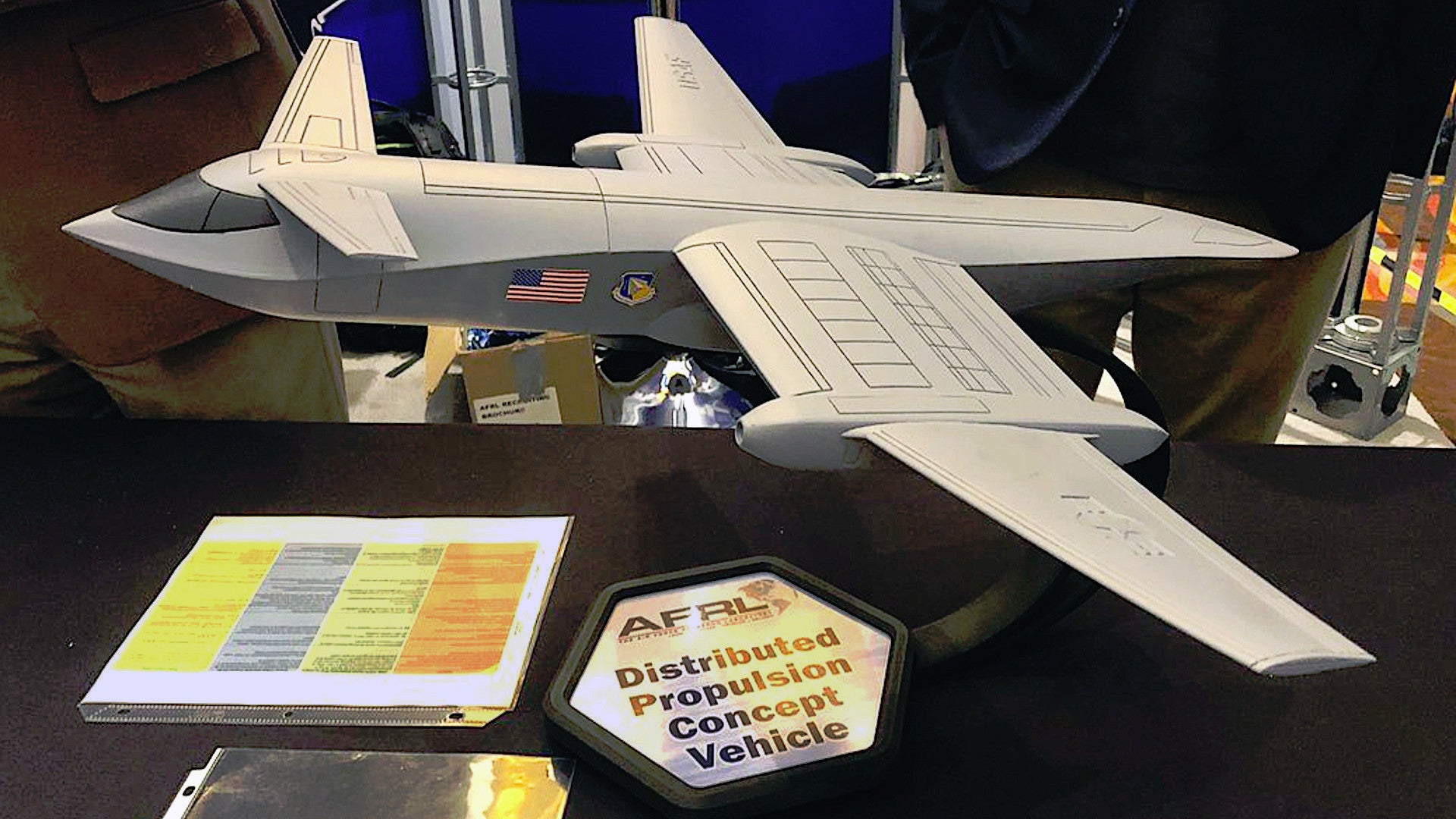The U.S. Air Force Research Laboratory recently displayed a model of what it is calling a Distributed Propulsion Concept Vehicle that uses gas turbines to produce power for arrays of electric fans. The Air Force has said that this experimental aircraft design, which offers benefits in terms of added redundancy performance, fuel economy, and more, could be a stepping stone toward a “vision vehicle” for a new short takeoff capable cargo aircraft. This is something the service has been chasing in various forms for nearly four decades. The War Zone has previously chronicled those developments, which also involve stealthy and vertical takeoff and landing capable designs, in great detail in a two-part feature that you can find here and here.
Guy Norris, Aviation Week‘s Senior Editor, spotted the model at the American Institute of Aeronautics and Astronautics’s SciTech Forum and Exposition, which opened in Orlando, Florida on Jan. 6, 2020. He was nice enough to share his pictures of it on the show floor with us here at The War Zone.
The model that the Air Force Research Laboratory (AFRL) put on display is a tailless design with prominent canards over the cockpit. The fuselage is also chined, which points to a stealthy design goal.
The main wings feature broad central “boxes” with sponsons in between them and more slender, swept outer sections. The two wing boxes on either side of the fuselage each contain seven separate sections where electric-powered fans would go.
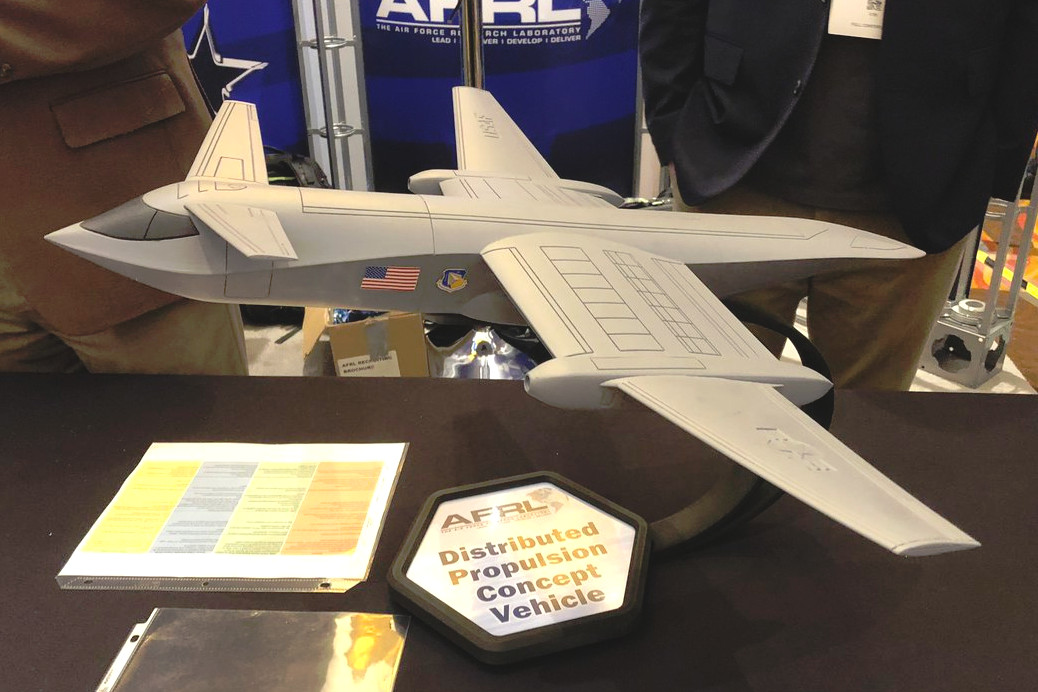
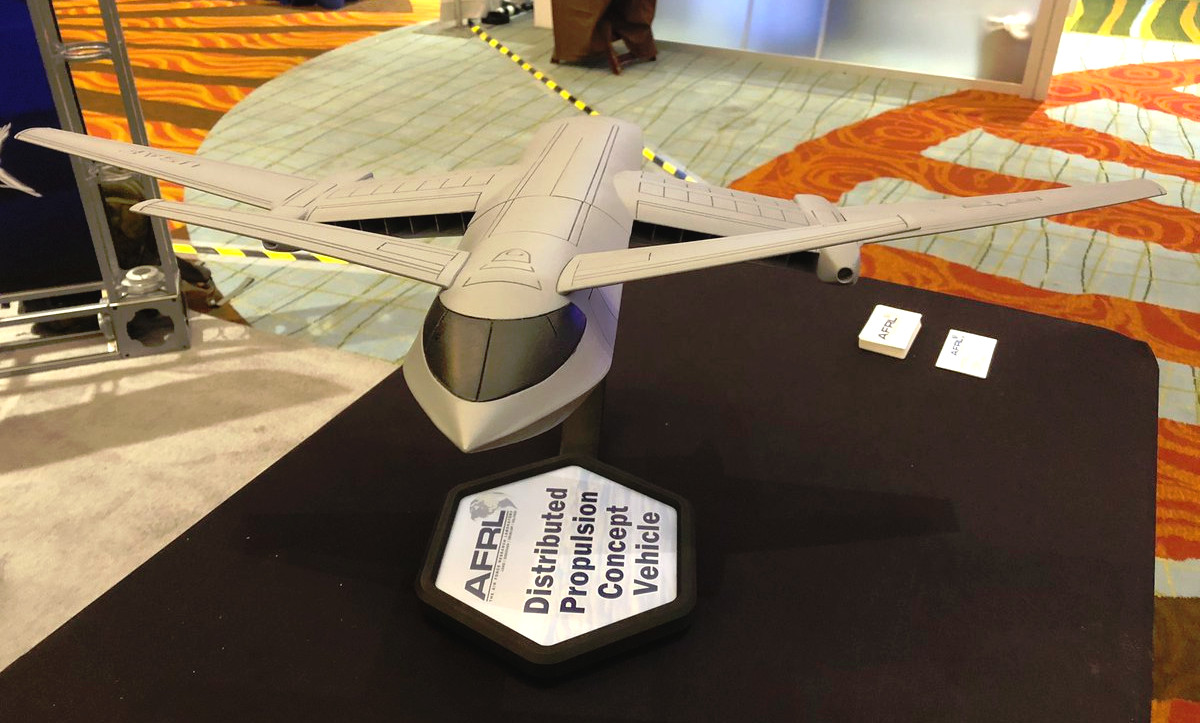
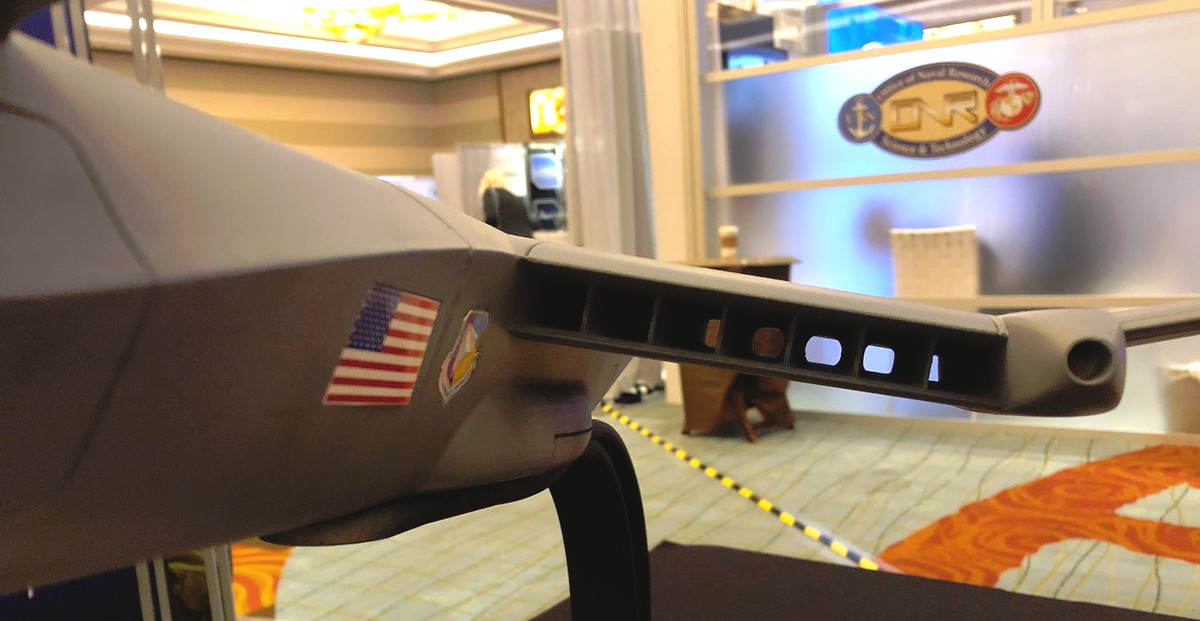
The exact origins of the design that AFRL’s model depicts are unclear, but it does bear some resemblance to the XV-24A LightningStrike, an unmanned, vertical takeoff and landing capable concept that Aurora Flight Sciences, now part of Boeing, together with Rolls-Royce and Honeywell, developed for the Defense Advanced Research Projects Agency’s Vertical Take-Off and Landing Experimental Aircraft program, or VTOL X-plane.
In addition to arrays of fans built into the main wing, the LightningStrike concept also had additional fans mounted on canards on either side of the forward fuselage. Both the main wings and canards could rotate upward for vertical takeoff and landing.


However, the XV-24A featured a hybrid, distributed propulsion concept with a gas turbine in the center of the fuselage with the primary job of driving the electric generator necessary to provide power for the electric fans, rather than generating thrust. DARPA canceled the XV-24A program in 2018, ostensibly due to a lack of interest from both the U.S. military and commercial companies, as well as reports of difficulties in the development of its generator.
AFRL’s model shows a different configuration that is extremely similar, if not identical, to those found on designs from one company, in particular, Empirical Systems Aerospace, Inc., or ESAero. Since its founding in 2003, this company has been promoting various concepts that use gas turbines mounted somewhere along the outer wing to drive the electric generators to power the fans. The sponsons on AFRL’s model are similar to ESAero designs using turboshaft engines to drive the generators, though other concepts the company has developed have used piston engines, as well.

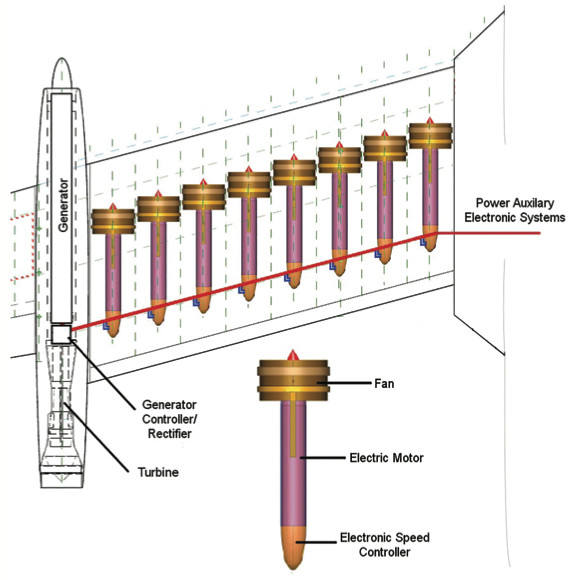
ESAero has promoted the basic concept as offering the potential for significant improvements in both performance and fuel efficiency, as well as reducing pollution and simply being quieter. The configuration also offers important redundancy benefits given the large arrays of smaller fans, rather than a small number of traditional engines.
Since at least 2016, the company has also been working on an all-electric experimental design for NASA, the X-57A Maxwell, which is a highly modified Tecnam P2006T light aircraft. The X-57A project is an outgrowth of NASA’s Leading Edge Asynchronous Propeller Technology (LEAPTech), which began in 2014.
The planned final configuration for the X-57A will feature six small fans on each wing, as well as a pair of larger electrically-driven propellers, one on each wingtip. The smaller fans will help provide sufficient lift during takeoff and landing, but will be shut off during the main phase of flight, with the two wingtip propellers alone providing forward thrust. NASA hopes to the X-57A will eventually offer “a 500 percent increase in high-speed cruise efficiency, zero in-flight carbon emissions, and flight that is much quieter for the community on the ground.”

That the Air Force is also exploring distributed propulsion concepts that mirror the ones that ESAero has been working on over the years is hardly surprising. The company has already done extensive research and development work on its distributed propulsion concepts under contract to NASA and AFRL, including as part of the latter’s Revolutionary Configurations for Energy Efficiency (RCEE) program.
It’s also interesting to note that the firm has also done separate work on hybrid wing body concepts for Lockheed Martin’s Skunk Works advanced design division. Skunk Works has proposed hybrid wing body designs to the Air Force as the basis for future advanced transport aircraft as part of various programs, such as Speed Agile, which you can read about in much greater depth in this past War Zone story.
It’s not clear whether the model that AFRL displayed reflect the proposed short takeoff and landing capable “vision vehicle” in any way. There are markings painted on top of the central wing boxes that could indicate doors for ducting for a blown air system that could provide important extra lift. There are also indicators of large flaps on both the leading and trailing edges of the wing boxes that could generate even more lift.
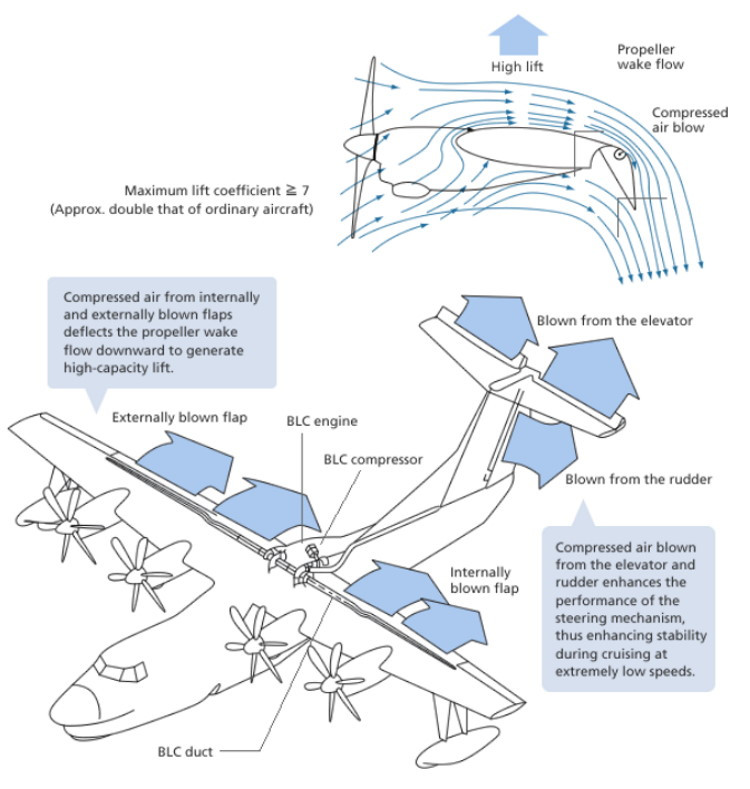
A high-efficiency tactical cargo plane that has greater range and increased fuel efficiency over comparable existing aircraft would already be appealing to the U.S. Air Force, which has a great interest in reducing logistical demands for airlift and other air operations. Such a design could be extremely valuable in future expeditionary and distributed operations, especially in areas where access to established airfields with robust infrastructure may be limited due to enemy strikes or other factors.
A design that adds impressive short-field performance would open up the potential for operations in even more austere locations. The reduction in acoustic signature that the distributed propulsion concept offers could be beneficial to reducing the vulnerability of the aircraft.
Aviation Week‘s Guy Norris is set to publish a piece on AFRL’s follow “vision vehicle” concept in the near future, which will offer additional insight into the Air Force’s distributed propulsion plans.
Contact the author: joe@thedrive.com
